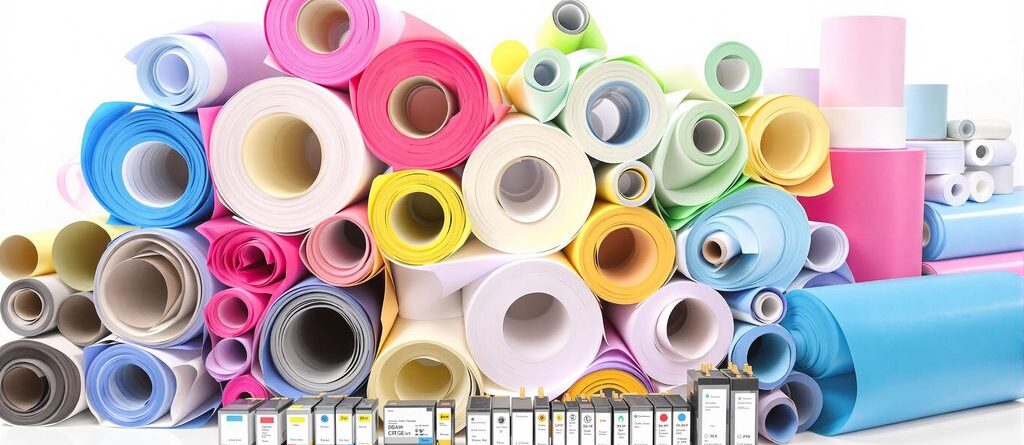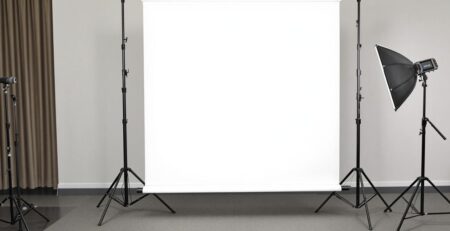The Ultimate Guide to Effective Sign Printing for Your Business
Getting your business noticed is a big deal, right? Well, one of the best ways to do that is through good old-fashioned signs. We’re talking about more than just a piece of paper; effective sign printing can really make or break how people see your company. From grabbing attention to telling your story, signs are super important. This guide will walk you through everything you need to know to make sure your signs are doing their job, helping your business shine.
Key Takeaways
- Planning your sign project carefully helps make sure everything goes smoothly from start to finish.
- Good design, like using the right colors and clear images, makes your sign easy to read and remember.
- Signs that work well are clear, show off your brand, and help bring in customers.
- Picking the right type of sign for where it will be used is a smart move.
- Signs are a big part of building your brand and getting people to notice and trust your business.
Planning Your Custom Sign Printing Project
Before you jump into picking out fonts or materials, it’s smart to take a step back and really think about what you want to achieve with your sign. A little planning can save you a lot of headaches (and money!) down the road. It’s like anything else – a little prep goes a long way.
Defining Your Custom Sign’s Purpose
What’s the main goal of your sign? Is it to attract new customers, direct people to a specific location, or promote a special offer? Knowing the answer to this question will shape every other decision you make, from the size and materials to the design and placement. For example, a sign designed to grab attention from a distance will look very different from one intended to provide detailed information up close.
- Are you announcing a grand opening?
- Are you promoting a limited-time sale?
- Are you simply trying to increase brand awareness?
Think of your sign as a silent salesperson. What message do you want it to convey, and what action do you want people to take after seeing it?
Understanding Your Target Audience
Who are you trying to reach with your sign? A sign that appeals to teenagers will likely look very different from one that targets senior citizens. Consider things like age, gender, income level, and interests when making design choices. What colors, fonts, and images will resonate with your ideal customer? Understanding your audience is key to creating a sign that truly connects. Your custom sign should speak directly to them.
- What are their needs and desires?
- What kind of language do they use?
- What are their aesthetic preferences?
Determining Your Sign’s Display Location
Where will your sign be located? This is a huge factor in determining the right size, materials, and design. An outdoor sign needs to be durable enough to withstand the elements, while an indoor sign might prioritize aesthetics. Also, consider the viewing distance and angle. A sign placed high above a storefront needs to be much larger and bolder than one placed at eye level. Think about how people will interact with your sign in its environment.
- Will it be indoors or outdoors?
- What is the surrounding environment like?
- How far away will people be viewing it from?
Here’s a simple table to illustrate how location impacts material choice:
| Location | Material Considerations | Examples | Benefits |
|---|---|---|---|
| Outdoor | Weather resistance, UV protection, durability | Aluminum, acrylic, vinyl | Long-lasting, fade-resistant, withstands harsh conditions |
| Indoor | Aesthetics, weight, ease of installation | Foam board, PVC, fabric | Lightweight, easy to install, wide range of design options |
| Trade Show | Portability, ease of setup, visual impact | Retractable banners, pop-up displays | Easy to transport and assemble, creates a professional and eye-catching display |
Designing an Eye-Catching Business Sign
Let’s face it, a business sign is often the first thing potential customers see. It’s your chance to make a statement, to draw them in, and to tell them who you are without saying a word. But how do you create a sign that truly stands out? It’s more than just slapping your logo on a board. It’s about understanding design principles and knowing what resonates with your target audience.
Selecting Impactful Colors for Sign Printing
Color psychology is a real thing, and it plays a huge role in how people perceive your brand. Think about what emotions you want to evoke. Red might convey excitement or urgency, while blue often signals trust and stability. Green can suggest nature or growth, and yellow is often associated with happiness and optimism.
Consider your brand identity when choosing colors. Do you want to use your existing brand colors for consistency, or do you want to try something new to grab attention? Also, think about the location of your sign. Will it be in direct sunlight? Some colors fade faster than others.
Ensuring High Contrast for Readability
Contrast is key to readability, especially from a distance. Imagine driving down the road and trying to read a sign with low contrast – it’s nearly impossible! High contrast, on the other hand, makes your message pop.
Here’s a simple rule of thumb: dark text on a light background or light text on a dark background. Avoid using similar colors next to each other, as they can blend together and become difficult to read. For example, black text on a white background is a classic, high-contrast combination. You can also use a color contrast checker tool to ensure your color choices provide sufficient contrast for readability. When you design your custom sign, readability is key.
Utilizing High-Quality Imagery and Graphics
Images and graphics can add visual interest to your sign and help communicate your message more effectively. But it’s important to use high-quality images that are clear, crisp, and relevant to your brand. Avoid using blurry or pixelated images, as they can make your sign look unprofessional.
If you’re using graphics, make sure they’re simple and easy to understand. Too many elements can clutter your sign and distract from your message. Consider using icons or illustrations to represent your products or services. Also, make sure your images and graphics are properly sized for your sign. You don’t want them to be too small to see or so large that they overwhelm the text. Remember, a well-chosen image can speak volumes and help you grow your business.
A great sign isn’t just about aesthetics; it’s about communication. It’s about conveying your brand’s message clearly and effectively. It’s about attracting the right customers and making a lasting impression. So, take the time to design a sign that truly represents your business and helps you achieve your goals.
Characteristics of Effective Business Signage

Achieving Clarity and Readability in Sign Printing
A sign’s primary job is to communicate quickly and clearly. Think of it like a billboard – people often see it from a distance or while in motion. That means big, easy-to-read fonts are a must. Don’t try to cram too much information onto one sign. Focus on the most important details, like your business name or a short tagline. Consider these points:
- Use fonts that are clean and simple.
- Make sure there’s enough space between letters and words.
- Prioritize a clear visual hierarchy so the most important information stands out.
Effective signage isn’t just about looking good; it’s about making sure your message gets across without any confusion. If people can’t read it, they won’t respond to it.
Incorporating Strong Brand Elements
Your signage is an extension of your brand. It should reflect your brand’s personality and values. This means using consistent colors, fonts, and imagery across all your signage. If your brand is modern and sleek, your signs should be too. If it’s more traditional, your signs should reflect that as well. Here’s how to do it:
- Use your brand’s logo prominently.
- Stick to your brand’s color palette.
- Maintain a consistent style across all your signage.
Attracting and Retaining Customers Through Signage
Good signage does more than just identify your business; it attracts new customers and keeps existing ones coming back. A well-designed sign can pique someone’s interest and entice them to learn more. Consider adding elements that encourage engagement, such as:
- Eye-catching graphics or illustrations.
- A clear call to action (e.g., "Visit us today!").
- Special offers or promotions highlighted with custom banner printing.
Effective signage reassures customers that your brand is trustworthy and worth revisiting. It’s an investment that pays off in the long run.
Choosing the Right Type of Sign for Your Business

Choosing the correct type of sign is a big deal. It’s not just about slapping your logo on something; it’s about picking the right tool for the job. Think of it like this: you wouldn’t use a hammer to screw in a screw, right? Same goes for signs. You need the right one to effectively communicate your message and attract the right attention.
Event and Trade Show Signage Solutions
Events and trade shows are prime opportunities to make a splash, but you’re competing with a ton of other businesses for attention. Your signage needs to be on point to stand out. Here are a few options:
- Banners: These are versatile and can be hung or displayed on stands. Great for general branding and drawing people in.
- Table Tents: Perfect for displaying specific information on your tables, like promotions or product details.
- Tablecloths: A branded tablecloth adds a professional touch to your booth and reinforces your brand identity.
- Posters: Use posters to promote specific products or services you’re offering at the event.
Outdoor Business Sign Options
Outdoor signs are your 24/7 marketing team. They’re constantly working to attract customers, even when you’re closed. Here are some popular choices:
- A-Frame Signs: These are portable and great for advertising daily specials or promotions on sidewalks.
- Window Graphics: Use window clings or decals to showcase your products or services and attract foot traffic.
- Building Signs: These are permanent signs attached to your building, like channel letters or illuminated signs, and are crucial for brand visibility.
- Yard Signs: Perfect for advertising services or events in residential areas.
Indoor Directional and Promotional Signs
Once customers are inside, signs help them navigate and encourage them to make a purchase. Here are some ideas:
- Directional Signs: Help customers find what they’re looking for with clear and concise directional signage.
- Point-of-Sale Displays: Use signs near the checkout to promote impulse buys or special offers.
- Posters and Banners: Indoor posters and banners can highlight specific products or services and create a visually appealing environment.
- Digital Displays: Consider using digital displays to showcase dynamic content and engage customers.
Choosing the right sign material is also important. For outdoor signs, you’ll want something durable that can withstand the elements, like aluminum or acrylic. Indoor signs can be made from a wider range of materials, including foam board, PVC, or even fabric. Think about the look you’re going for and the environment where the sign will be displayed when making your decision. Don’t forget to consider custom signs to really make an impact.
Why Business Signs Are Essential for Branding
Business signs are more than just decorations; they’re a key part of how people see your business. They help create a brand identity and build trust with customers. Let’s look at why they’re so important.
Making Strong First Impressions with Sign Printing
Your sign is often the first thing potential customers see. A good sign grabs attention and makes people want to learn more about your business. Think of it as your first handshake. A bad sign, on the other hand, can make people ignore you completely. It’s like showing up to a meeting in pajamas – not a great look. Your sign shows people that your business is worth their time and money. It’s a silent salesperson, working all day and night to promote your brand.
Building Brand Recognition and Trust
Signs do more than just point people to your door; they help build your brand. They communicate your company’s values and personality. Using the same colors, fonts, and images as your other marketing materials makes your brand consistent and easy to recognize. Think of big brands like McDonald’s or Apple. You know their logos and colors instantly. That’s the power of consistent branding. Good signage helps people remember you and trust that you’re a professional business. For example, if you are attending a trade show, you may want to use branded backdrops to maintain branding consistency.
Enhancing Customer Engagement with Custom Signs
Signs can do more than just attract new customers; they can also keep existing ones coming back. A well-placed sign inside your store can guide customers, highlight special offers, and tell your brand’s story. This makes their experience better and encourages them to return. Think about a coffee shop with a sign that says "Free Wi-Fi." That simple sign can make customers stay longer and buy more. Signs can also create a memorable experience. A unique, eye-catching sign can make your business stand out and leave a lasting impression.
Signs are a simple way to communicate important information. They can tell people where to go, what to do, and what to expect. This makes it easier for customers to interact with your business and feel more comfortable. A clear sign can reduce confusion and improve the overall customer experience.
Selecting a Reputable Sign Printing Company
Finding the right sign printing company can feel like a daunting task. There are so many options out there, and it’s hard to know where to start. But don’t worry, with a little research, you can find a company that meets your needs and helps you create amazing signs for your business.
Evaluating Experience and Expertise in Sign Printing
When choosing a sign printing company, experience matters. You want a company that has a proven track record of delivering high-quality signs. Look for a company that has been in business for several years and has a portfolio of work that you can review. Don’t be afraid to ask for references from past clients. It’s also important to find out what kind of equipment and technology the company uses. The best companies invest in the latest technology to ensure that they can produce signs that are both visually appealing and durable.
Assessing Available Signage Options and Materials
A good sign printing company should offer a wide range of signage options and materials. This includes everything from banners and posters to vehicle wraps and outdoor business signs. They should also be able to work with a variety of materials, such as vinyl, aluminum, and acrylic. Make sure the company you choose can provide the specific type of sign you need and that they use high-quality materials that are appropriate for your intended use. Consider these points:
- Material Durability: Will the material withstand the elements if used outdoors?
- Printing Technology: Do they offer UV printing for added durability?
- Material Options: Can they provide sustainable or eco-friendly options?
Seeking Comprehensive Support Throughout the Process
The best sign printing companies don’t just print signs; they offer comprehensive support throughout the entire process. This includes design assistance, site surveys, and professional installation. They should be able to help you with every step of the process, from concept to completion. Effective design ensures your custom sign design grabs your audience’s attention. Look for a company that is responsive, communicative, and willing to go the extra mile to ensure your satisfaction.
A reputable sign printing company will conduct thorough site surveys to assess installation conditions and identify potential challenges. They’ll also provide detailed renderings of the space and details on the necessary permits for installation.
Picking a good sign printing company is super important for your business. You want a company that does great work and delivers on time. If you’re looking for a reliable partner for your next sign project, check out our website to see how we can help.
Wrapping Things Up
So, there you have it. Getting your signs just right really matters for your business. It’s not just about slapping some words on a board; it’s about making a good first impression and getting people to notice you. When you take the time to plan out your signs, pick the right materials, and make sure they look good, you’re setting your business up for success. A well-made sign can bring in new customers and help your business grow. It’s a pretty simple idea, but it makes a big difference.
Frequently Asked Questions
What’s the best type of sign for my business?
The best sign for your business depends on what you need it for. Are you putting it outside? Inside? For a special event? Knowing where and why you need a sign helps pick the right kind, like a big outdoor sign or a small indoor one.
What makes a business sign effective?
Good signs are easy to read, even from far away. They use colors that stand out and clear fonts. They also show off your brand’s look and feel, making people remember your business.
How can I make my business sign more noticeable?
To make your sign stand out, use bright colors that catch the eye and make sure there’s a good difference between the text and the background. Also, use large, clear pictures and fonts so people can easily understand your message.
Why are signs so important for my brand?
Signs are super important for your brand because they’re often the first thing people see. A great sign helps people recognize your business, builds trust, and makes them want to learn more about what you offer.
How do I choose a good sign printing company?
When picking a sign company, look for one that has lots of experience and good reviews. Make sure they offer the types of signs and materials you want, and that they’re ready to help you from start to finish.
What are the main rules for good sign design?
Good design principles include making sure your sign is easy to read, uses colors that pop, and features high-quality images. It should also match your brand’s style, so everything looks consistent.











